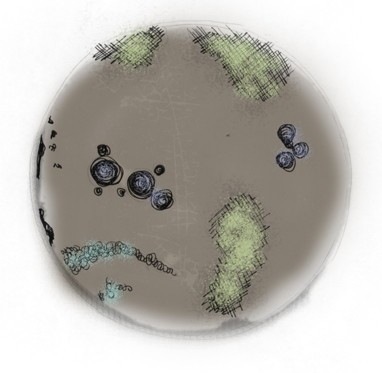Bio students hunt for bacteria
Annual lab experiment reveals the dirtiest spots on campus
What do you think is the dirtiest part of the university? Hint: it’s not the toilet seats, escalator rails, or the Bulman Centre couches.
Every year microbiology students conduct the ubiquity lab where they get to swab (almost) anything around the university to find out what kind of bacteria lives in the university and where.
Some of the places students swab are the water fountains, public telephones, keyboards in the Uplink computer lab and the microwave in the Buffeteria, said Anne Adkins, associate professor of microbiology at the University of Winnipeg.
“Sinks are a real problem here at the U of W,” Adkins said, adding that she found a pathogen that causes urinary tract infection in the back room of the campus cafeteria one year.
Some of the most bacteria-ridden items at the university are, perhaps not surprisingly, around the food.
Fifteen years ago, students were banned from swabbing for bacteria where food is served on campus, after they discovered bacteria on the fingers of food preparation staff and kitchen clothes, according to Adkins.
“We were totally banned,” she said. “[As far as I know] we’re not allowed back.”
Another breeding ground for bacteria are the communal microwaves.
“ I think what was interesting was how dirty we are as people.
Kendra Kuo, third-year biology student
“It’s loaded,” Adkins said. “They don’t kill bacteria. That was an eye-opener to me. I would never use one of those things.”
Third-year biochemistry student Kendra Kuo took the lab last year and examined the feet of chairs, the bottom of her shoe, a girls’ bathroom sink and a water fountain handle on campus.
“I think what was interesting was how dirty we are as people,” Kuo said. “The dirtiest part is our hands.”
Third-year biochemistry student Chris Krzyszczyk looked for bacteria on the escalator handrails. When asked what he found, he said “Nothing. Because they need water to grow on.”
As well, dry toilet seats are void of microorganisms.
The main environmental factor for bacteria to thrive and live is moisture, according to Adkins. No bacteria was found on cool, dry surfaces such as hand rails and toilet seats.
Another factor on bacteria growth is the smoothness of a surface. Smooth surfaces tend to not accumulate bacteria since there are less crevices for the bacteria to hide in.
The type of testing that the students do for this lab has shown that the hand sanitizing stations that riddle the university are largely ineffective.
Adkins said that the tests the students do in advanced microbiology classes use the same techniques and equipment as hospitals.
“They’re doing labs that are very practical if they want to go into that area.”
Published in Volume 64, Number 16 of The Uniter (January 21, 2010)








